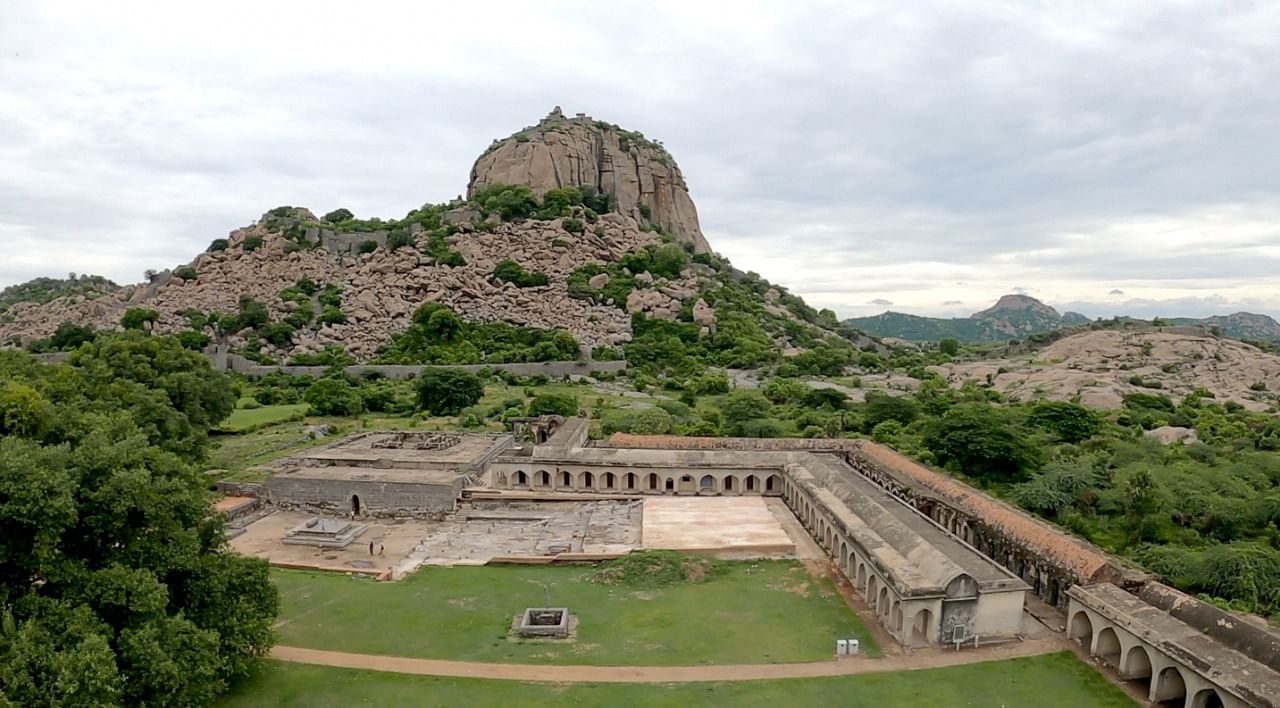- Region: Tamil Nadu, from Thiruvannamalai about thirty-seven kilometers
- Established In: Thirteenth century
- Famous As: Eastern Troy
- Constructed By: (Chola dynasty)
This ancient fort was constructed in the period of 9th
century with various powers. There were many rulers who ruled this fort and few
of them are Vijay Nagar’s Empire in the duration of 13th century, Gingee Nayaks
had confirmed this as the head quarters. And during the rule of Shivaji, this
fort was a strong hold for the Marathas in the south of India.
It is situated over 3 various hills, and is bounded by a
three kilometer long boundary land. Such a massive and gigantic fortress has
been constructed through Chola Dynasty. The unbelievable valour and courage of
this fort's old rulers converted father Pinments into priest who called this
fort as Troy of East.
Birth of Fort
Tamil Nadu state’s courageous fort has an amazing History
that commences from 1383 till 1780. You must be excited to know the history
behind this fort, so its history has many twists and turns. Maratha dynasty's Vijayanagar
emperors & Mughals had captured this land and then it was captured by the
Chola dynasty. This was controlled by the British and French emperors just for
some time. During the year 1638, this fort of Tamil Nadu went from the hands of
Vijayanagar emperors into Bijapur Sultanate's hands. After some time again it
was again captured through emperor Shivaji during the year 1677, during 1690 it
went towards the Mughal side, 1750 French and 1762 British. During the Mughal
period, this fort had become Arcot's head quarter. While in the eighteenth
century, French dynasty had captured Tamil Nadu state's fort and they kept this
castle below livelihood for eleven years. At that time numbers of sculptural
adventure of this fort were transferred to Tamil Nadu state's Pondicherry.
Gingee fort is actually a worthy tourists destination. If you see
the panoramic view of Gingee castle, you will feel that this old
monument is trying to tell the history of this structure, many essential
historical things that have been viewed by this fort.
Beauty of Fort
As per the legend, Gingee fort's name has come up from a
virgin goddess called Senji Amman. This Fort comprises strong walls that
intersect to three unreachable hills such as Chandrayandurg, Krishnagiri &
Rajagiri. These 3 hills are inclined in a triangle form, whereas the major
connecting wall is almost twenty meters thick. These 3 hill’s make unassailable
citadels, the inner portion of the fort contains a numbers of gates and
fortification.
Noticeable Features
Stables & Barracks
If you go towards Kalyana's western side, you will get
to see ranges of arched cells and low vaulted, which are called as stables and
barracks, at present this has been transformed to a Archeological Conservation
Training Camp.
Kalyana Mahal
It is one of the striking features of Gingee fort, but it
has been ruined now. This Mahal was constructed in a unique architectural style
that is Indo-Islamic, it comprises of a square shape court, it is bounded
through various rooms that had been made for the Governor family's women. At the center of the court,
there is twenty seven meter huge square building that has been constructed by
stone and it also has a pyramidal top.
Mosque of Ullam Khan
You can see this
mosque at the entrance, when you enter
inside the inner portion of Rajagiri fort. It has been built by Sad-at-Ullah
Khan. At that time, he had constructed this fort as a sign of this conquest on
De Singh. He had also put his power on this fort during the 1713 century. As
per the inscription written in Persian language that has been founded at this
place, this holy mosque has been made during the 1717 till 1718 years.
Granary & Gymnasium
This is one of the hugest garner, constructed by using
stones; it also has a huge entrance passage.
The walls of Granary are about two m thick. This stone building along
with barrel domed shed is only present on Granary's northern and eastern side,
this was used as a Gymnasium.
Venkataramana Temple
This is the biggest temple in Gingee. This spiritual temple
has been constructed by Muthiah Nayaka during the 1550.
Prisoner's well
It is located towards the back of Chakkaraikulam's in
Rajagiri hill. This very less circulation block wall is popular as during the
old period, at the place prisoners were chucked and were left for starvation.
Here you cant miss the luxurious
facilities because this place served a bathtub along with lots of water, big
shank that is located on the peak point of fort close to Chakrakulam-kunda,
these facilities are just like treasure for tourists like you. There are some
more structure and buildings within the fort area, which were lifted through
Gingee's powerful rulers that belong to Nayaka, Mughal, Vijayanagar, Carnatic
Nawab, Maratha, British and French families while the1383 till 1780 period.
Close Attractive Spots
If you go some kilometers ahead from this fort, Rajagiri has
one more castle that has been founded through Konar community's Chief Ananda
Kon during the 1200 centuries. Around 1240, his descendant Krishna made the
Krishnagiri. Rajagiri's fort is always made by black rock and Saffron.
Essential Guidelines for Tourists
While the way that goes towards the fort, you must take the
instructions and guidance from archeological office. The visiting time of this
fort starts from 09:00am till 05:00pm.
Accommodation
Here you will easily get accommodation facility like resort
and hotels as per your budget, at Tiruvannamalai.

0 comments:
Post a Comment